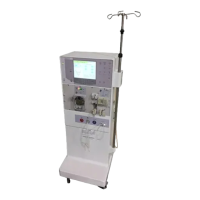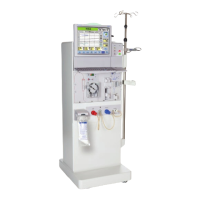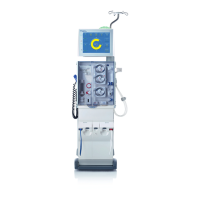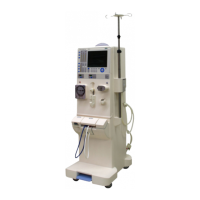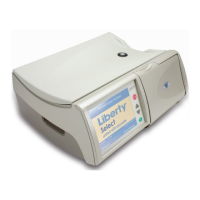2008T Troubleshooting Guide
P/N 490292 Rev. A
Yes TEMP LESS THAN 0.3! See procedure number T- 1.3.13 (page 257).
No TEMP is NOT less than 0.3! See parts a AND b below:
a) ENSURE NTC 3’s connector is unplugged from the 2
nd
distribution board position from the
left, “MON-NTC”. If NOT, return to (ABOVE) procedure number T- 1.3.12 (page 256).
b) Leaving NTC #3 unplugged, with the machine off, one at a time, swap in the listed
components (see COMPONENT LIST below) with known good, then in between
returning to Dialysis Program, to test each new component until screen 4’s TEMP is less
than 0.3 indicating the last component swapped in is the problem.
COMPONENT LIST: 1) Actuator-Test Board
1
; 2) Power Logic Board
1
; 3) Functional
Board
1,2
(possibly IC20); 4) Sensor Board
2
; 5) Distribution board; 6) Motherboard
1
.
1
To LOCATE these boards refer to Figure 4A (page 10)
2
To prevent “Cond Offset Failure” place the machine into T and C Mode (refer to
OPERATING MODES, (page 19))
T- 1.3.13 TEMP LESS THAN 0.3
a) Figure right, place the
6.04 KΩ
resistor plug, from the TWO-
RESISTOR SET, into the 2
nd
distribution board position from the left,
“MON-NTC”.
b) From debug screen 4, is TEMP 6.0 or
lower?
Yes TEMP 6.0 or lower! See procedure number T- 1.3.14 (page 258).
No TEMP more than 6.0! See parts a AND b below:
a) ENSURE the
6.04 KΩ plug from the TWO-RESISTOR SET is placed properly at the
2
nd
position from the left, “MON-NTC”. If TEMP is still more than 6.0 see part b.
b) Leaving the plug in place, with the machine off, swap in the listed components (see
COMPONENT LIST below), one at a time, with known good, in between returning to
Dialysis Program each UNTIL screen 4’s TEMP is 6.0 or lower indicating the last component
swapped in is the problem.
COMPONENT LIST: 1) Actuator-Test Board
1
; 2) Sensor Board cable; 3) Sensor Board
1, 2
;
4) Functional Board (possibly IC20)
1,2
; 5) Distribution board; 6) Motherboard
1
.
1
To LOCATE these boards refer to Figure 4A (page 10).
2
To prevent “Cond Offset Failure” place the machine into T and C Mode (refer to
OPERATING MODES, page 19).
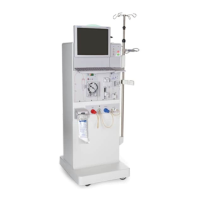
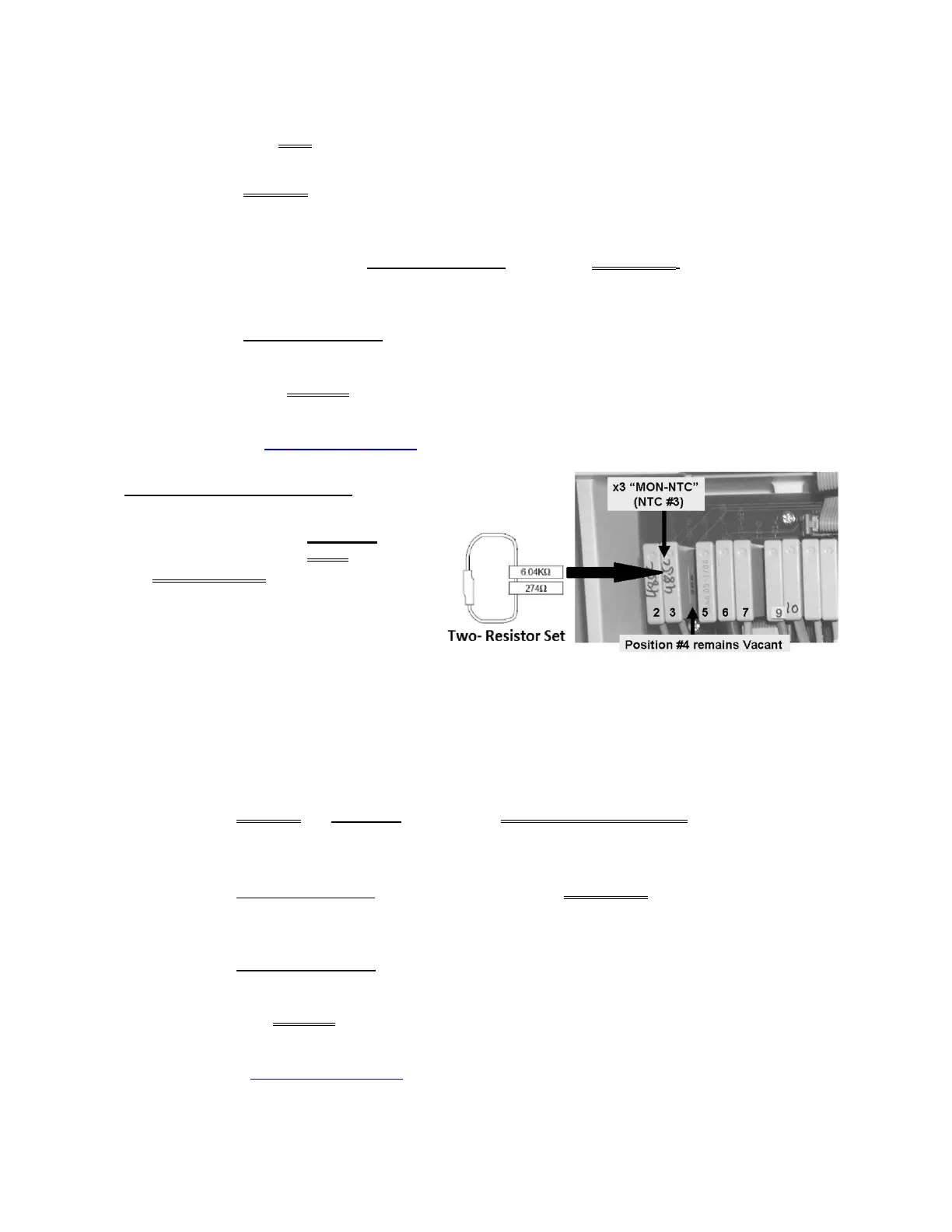